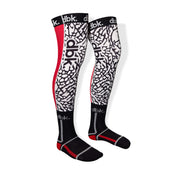Since its inception in the early 1900s, Motocross has evolved at an astonishing rate into the popular form we celebrate today. Thought to have been born in France and the UK at Auto-Cycle Club trials and meetings, the practice soon evolved into off-road, motorcycle cross-country events, nicknamed “scrambles,” where riders showed off their skills on natural terrain.
Eventually, the sport’s popularity propelled it across the pond to the United States, where a sustained interest led to the world’s first rival teams and, eventually, the first competition: the 1975 125cc World Championship. Now, there are competitions both small and large across the country–but one of the most widely-attended, well-respected, and revolutionary competitions continues to be the X Games.
Motocross in the US wouldn’t be what it is today without the advent of the X Games. Founded in 1994 and officially kicked off in 1995 in Providence and Newport, Rhode Island, the X Games brought together the best in extreme sports from around the world. In 1999, Moto-X made it to the games with Travis Pastrana winning gold. Since then, freestyle motocross (FMX) evolved as a variation on the sport, bringing tricks and stunts to the game in the late 90s and early 2000s. Tricks have certainly come a long way since the first recorded backflip (performed by Travis Pastrana–the man, the myth, the legend). We’ve seen riders perform incredible feats on their dirt bikes, including our own crew: Twitch, Tyler, Wanky, and Vicki have all made it to the podium with wins like Best Whip and Best Trick.
At DBK, we know that while the bike doesn’t make the rider, there is something to be said for the unique relationship between the two. The build and horse power of the bike influences what tricks and feats its rider can accomplish, from whips to back flips. With the wide variety of dirt bikes and pit bikes available today, it’s hard to imagine a time without the high-powered machines that help make the sport what it is. But at some of the earliest off-road “scrambles” of the 1920s, the bikes used were standard, on-road bikes. These earliest models were heavy and had relatively low-powered engines, making innovation in manufacturing an essential part of the sport’s evolution in coming years. After WWII, bike manufacturing improved and became specialized: Suzuki created their first dirt bike in 1954, followed by Yamaha in 1955 and Kawasaki in 1960.
These early bikes paved the way for the sport’s rise in popularity in the 70s. Plus, bikers made modifications to their own rides to make them better suited for off roading–modifications that eventually made their way into standard designs. That drive towards top-notch engineering, which flourished in the 1980s, brought about the bikes we know and love today–from Honda and Kawasaki to KTM and Yamaha. Dirt Bike Kidz’ Moto Graphics are about celebrating our riders’ bikes and legacies, featuring KTM, Husqvarna, and Suzuki bikes–and more–that show off our respect for what a good bike and its rider can accomplish.
A lot has changed since the earliest days of Motocross and FMX–the clothes are better, for one–but the heart of the sport has stayed much the same: dedicated athletes testing the limits of what they can do on a bike. The DBK crew looks forward to tearing up the road for years to come.





